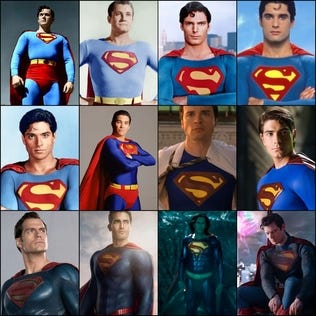
Superman represents something important for Americans. Created and first publishing during the Great Depression by writer Jerry Siegel and illustrator Joe Shuster, the character represented courage, strength, and above all, hope.
The first issue of Action Comics #1, featuring Superman as its lead, was a smashing success. Publishers didn’t have live sales data in 1938, so DC’s “analytics” amounted to checking the return rates of unsold issues from newsstands. Anything over 50 percent was considered a major success. Superman sold 65 percent. Then 80 percent. Then 90 percent. And then, unheard of in the Great Depression, sold out.
The real question was why?
A few things come to mind.
In the Great Depression, a much larger proportion of the U.S. population were first-generation immigrants. They identified with Superman because he, like them, found himself in a strange new place. (It also helped that Superman was a literal alien, which meant he could represent all immigrants.)
Like many immigrants, he had an identity he shared with the public—the “American” identity, so that he could fit in—as well as a “secret” identity from his home planet.
In an era where people who were struggling bristled against lawbreakers and scammers, Superman fought criminals, reasoned with abusive husbands, and even used his super-intelligence to unmask and humiliate the Klu Klux Klan.
Superman was everything Americans saw in themselves when they were at their very best.
More to the (visual) point, Superman was bold. He wore both blue and red…laced with gold.
Superman was a symbol—a shining light in dark times.
That was certainly true in the Great Depression.
Superman’s first trip to the big screen came in 1978—another deeply dark and depressing time for Americans still reeling from Vietnam, gas lines, and stagflation.
Here is Christopher Reeve portraying the Man of Steel in the 1978 film, Superman.
Notice the colors.
Superman stood for “Morning in America” a half-decade before Ronald Reagan used that phrase to get reelected in 1984.
Compare that movie adaptation with this next one: the 2013 film, Man of Steel.
There’s a lot we could say about the movie thematically, but it’s easier than that. Just look at the colors.
The film was gritty, dark, desaturated…and just not “Superman”—despite the fact the symbol he wears on his chest is his family’s symbol for “hope.”
Sorry, Henry Cavill. This wasn’t your fault. The entire series had more of a “Batman” vibe.
In many ways, it mirrors the mood when it was made. Americans weren’t thinking very highly of themselves around 2010 or so when the movie was filmed. We were still feeling the aftershocks of the Great Recession. Things were pretty bad. Not Great Depression bad, but still bad. Instead of a beacon of hope, Director Zack Snyder chose to lean in to the negative zeitgeist.
That was an unfortunate creative choice.
I think that’s why, despite these being decent films, they just feel…wrong.
But I have higher hopes for the new one.
Direct James Gunn seems to have rediscovered access to the color wheel and decided to dial the “dark” down to zero.
Have a look at the colors in this scene.
Look at the blue, the red, and the gold. Now those are Superman colors!
We even get another big win for the mood—Krypto the super dog comes to rescue Supes when he gets into a big fight in the film.
(It should be noted that pets became part of the American family in a big way during the Great Depression. Animals are the ultimate mood lifters.)
I don’t know if the movie will be any good.
But the colors are super.
Want to learn more about the origin and history of Superman—and why he still means so much to us?
That story (along with one on pets) may be found in my upcoming book, Bullfrogs, Bingo, and the Little House on the Prairie. I’m finished with final editing and audiobook recording. It’s on track for a mid-May release date and mid-April pre-order. I’ll keep you posted.
Here is that list of actors I promised:
From upper left to lower right: (Kirk Alyn) "Superman 40's Movie Serials KIRK ALYN" at Superman TV.net. Retrieved June 9, 2008. (George Reeves) "The Death of Superman" at Prairie Ghosts. Retrieved June 9, 2008. (Christopher Reeve) "Superman Poster" at Movie Poster.com. Retrieved December 24, 2008. (John Haymes Newton) "John Haymes Newton" at The Superman Super Site. Retrieved April 20, 2019. (Gerard Christopher) "2019-04-20 See the actors behind the Man of Steel" at Entertainment Weekly. Retrieved . (Dean Cain) "World of Superman" at UGO Networks. Retrieved June 9, 2008. (Tom Welling) "Tom Welling as Clark Kent" at Kryptonsite. Retrieved June 9, 2008. (Brandon Routh) "Brandon Routh" at Yahoo! Movies. Retrieved June 9, 2008. (Henry Cavill) "Henry Cavill" at twimg.com. Retrieved April 20, 2019. (Tyler Hoechlin) "Tyler Hoechlin" at Facebook. Retrieved April 20, 2019.










Great stuff. Colors, shades, hues, shadows and the like have long held much symbolic and signalling value. Interestingly, I've been wondering how genAI is going to pick those qualities and meanings up in this new era in a valid manner? Ditto for scents.